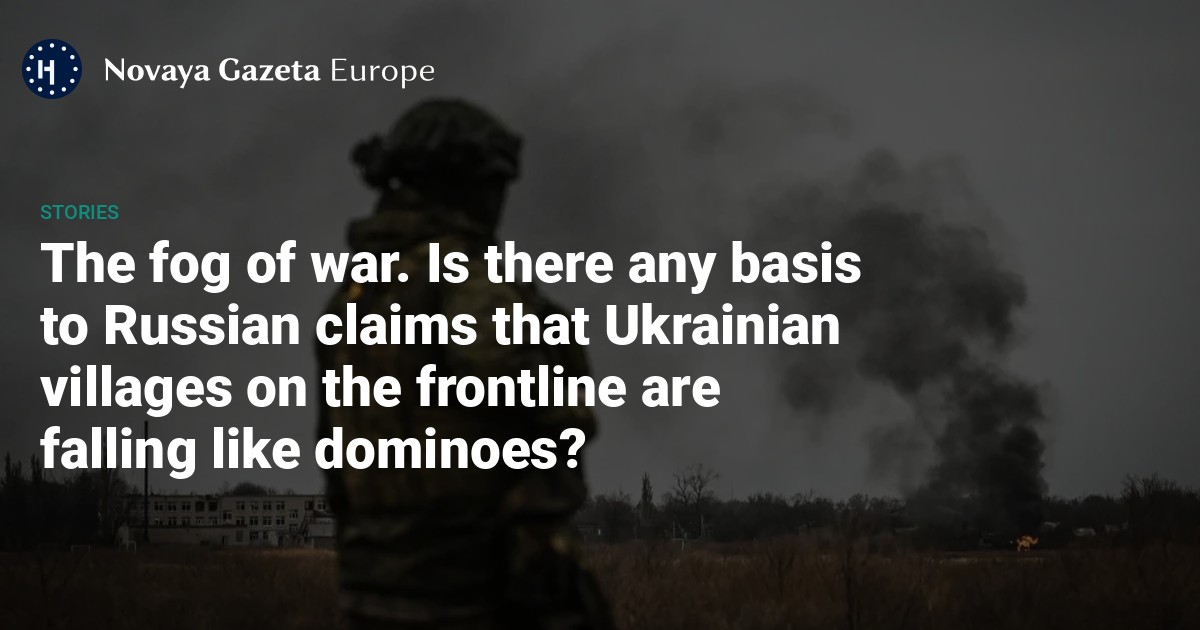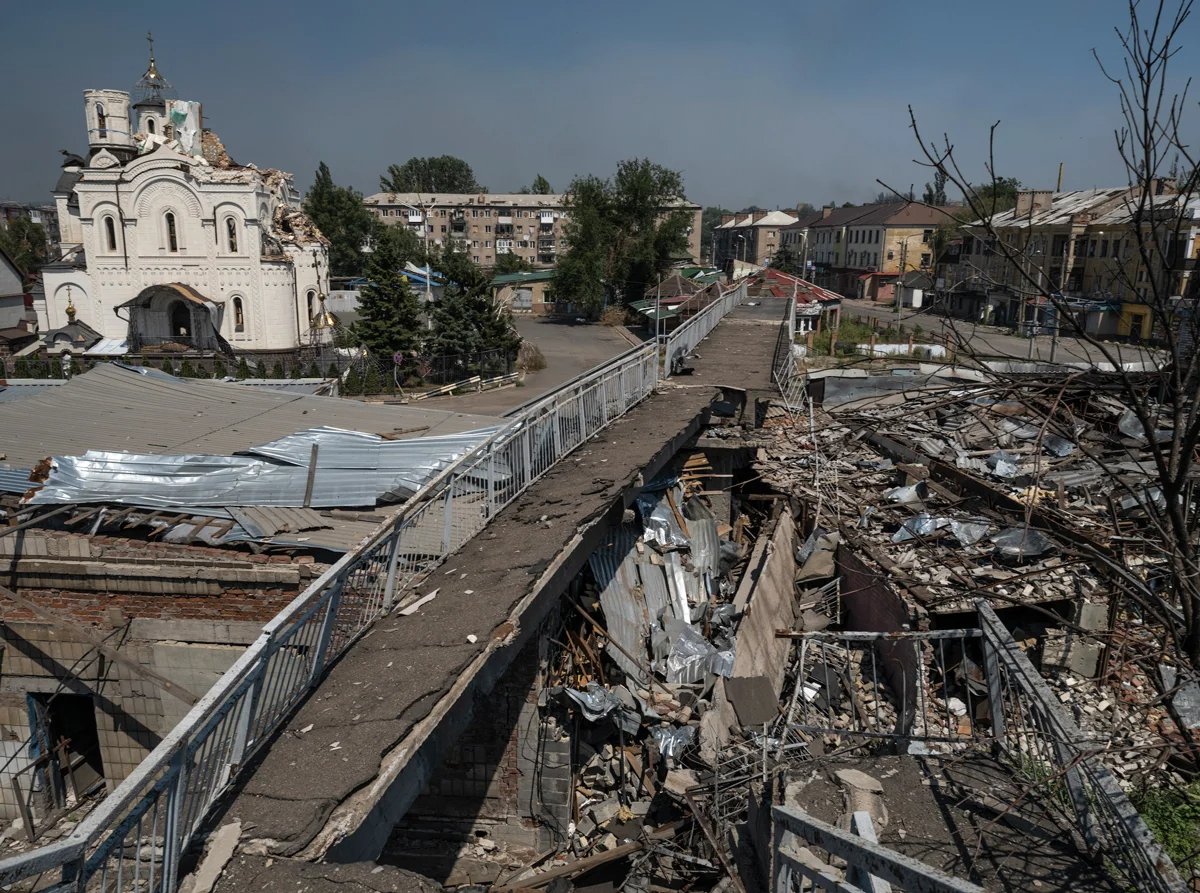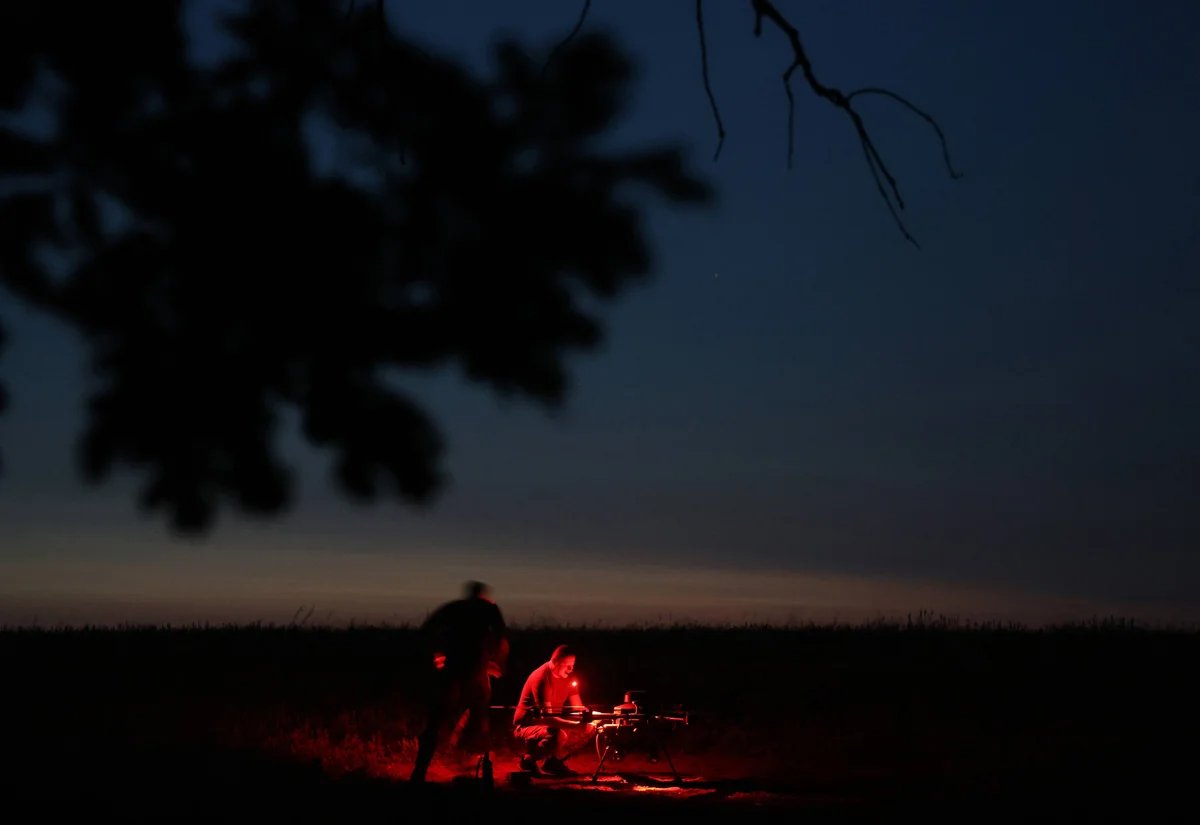



Late last week, Vladimir Putin announced that Russian forces had taken full control of the town of Chasiv Yar in Ukraine’s eastern Donetsk region, a significant victory for Moscow in what has become an achingly slow war of attrition. “I can assure you that this is absolutely true,” Putin said confidently, in a tacit acknowledgement that not all Kremlin claims of Russian advances were quite as real.
Russian pro-war military correspondents have previously reported the entry of Russian units into the Donetsk region city of Pokrovsk, and the subsequent battles taking place on its streets. The Kremlin and the Defence Ministry announce the capture of Ukrainian settlements on an almost daily basis.
Three and a half years into the war, Novaya Europe asked multiple military analysts to assess the situation on the frontline and to identify the areas where Ukrainian defences are currently facing the greatest risk.
“In July, the Russians were able to capture about 600 square kilometres of Ukrainian territory,” Israeli military analyst David Sharp told Novaya Europe, adding that the Armed Forces of Ukraine (AFU) were currently most under pressure in the Donetsk region near Pokrovsk and neighbouring Myrnohrad, where Russian forces have edged ever closer to the two cities and sabotage and reconnaissance groups have been creeping into the outskirts and fighting in residential areas.
“Pokrovsk itself is at risk of operational encirclement and the Dobropillya-Pokrovsk highway, which is extremely important for defence logistics, is at risk of being cut off,” Sharp says, citing the lack of Ukrainian defensive installations in the area. “The AFU is trying to control the line of contact using its scattered strongholds and drones, but these clearly aren’t sufficient to hold off the advancing enemy forces.”
“Blustering reports of significant successful advances are more often than not simply Russian propaganda,” says Ukrainian military expert and reserve AFU colonel Roman Svitan. “However, some areas have indeed seen an increase in [Russian] pressure.”
Pokrovsk is fulfilling its role — draining the enemy’s huge resources and depleting the advance as much as possible.
Svitan agrees that the most perilous situation for the AFU is currently around Pokrovsk, but adds that the Russian military has been on the outskirts of the city for over a year, but still hasn’t managed to occupy it. Small sabotage and reconnaissance groups creeping into the city don’t pose a serious threat, Svitan says, though he adds that the drones the Russians use to monitor Ukrainian logistics do pose a significant problem.
Ivan Stupak, a Ukrainian military analyst and former secret service officer, calls Pokrovsk and Kostyantynivka the most imperiled cities for the AFU at present. The bottleneck through which Pokrovsk is resupplied is about 15 kilometres wide but is constantly decreasing.
At Kostyantynivka, the supply corridor is 25 kilometres wide. If the Russians can narrow the supply corridor near Pokrovsk to 10 kilometres, defending the city will become extremely dangerous, because all access roads will be under total Russian control.
“I must say Pokrovsk has held out much longer than experts predicted,” Stupak says, noting that many analysts predicted the city would fall to the Russians last year. “However, the situation is getting worse. … We can assume the Russians will capture it within the next two months. So far, though, Pokrovsk is fulfilling its role — draining the enemy’s huge resources and depleting the advance as much as possible.”

Destruction in Kostyantynivka, Donetsk region, Ukraine, 30 July 2025. Photo: AFU / EPA
AFU defences are still resisting the Russian onslaught around Chasiv Yar, says Sharp, and though no independently verified information is yet available about whether the city has been completely captured or not, it’s clear that Russian troops have not been able to achieve their offensive targets in full.
Despite video footage being shared online that appears to show Russian flags flying from buildings in various parts of the city, Sharp says that the AFU is still holding on to some positions, and citing maps published by DeepState, that Chasiv Yar’s Shevchenko district remains under Ukrainian control.
Though he stresses that it’s yet to happen, Svitan says he believes that if the Russians are able to take full control of Chasiv Yar, they will immediately move on Kostyantynivka, though he also notes that it may take years to capture due to its large size.
Once the Russians capture Chasiv Yar, they will most likely move on the Kramatorsk-Slovyansk agglomeration.
“In the spring of 2024, with the Russian army approaching Chasiv Yar, Bilohorivka, a relatively small town on a hill with a population of about 12,000, was the main obstacle to advancing troops,” Sharp says, adding that it was known as “the gateway to Kostyantynivka”. However, since then, the Russians have made significant progress in approaching Kostyantynivka from Toretsk and via the road to Pokrovsk, Sharp continues, meaning that Chasiv Yar is no longer of such strategic importance. Kostyantynivka is almost half-surrounded and the battle for the city itself will likely begin in the near future.
“Ukraine is still holding on to multiple pockets of resistance within the completely destroyed city of Chasiv Yar,” says Stupak. “So there is still no real basis to claim that it’s been fully captured by the Russian military. However, we need to understand that the battle for the city has left almost no stone standing.”
Stupak also believes that once the Russians capture Chasiv Yar, they will most likely move on the Kramatorsk-Slovyansk agglomeration, which includes Kostyantynivka and Druzhkivka, stressing that “the Russians will only have full control of the Donetsk region and the entire Donbas if they capture all these cities”.

AFU servicemen near Kupyansk, Kharkiv region, Ukraine, 5 June 2025. Photo: Anatoliy Stepanov / Sipa / Shutterstock / Rex Features / Vida Press
“One important area is Kupyansk. There the Russians have approached the city from their ever-expanding bridgehead on the banks of the Oskil River in the Kharkiv region they captured earlier,” says Sharp. “The Russian army is actually approaching the town in small groups. The AFU does not have enough people to ensure effective defence. In some areas, there are only a few Ukrainian soldiers per kilometre. In such cases, the enemy will be able to penetrate deep behind Ukrainian lines and launch a swift attack.”
Another danger zone for the AFU, according to Sharp, is the area where the Dnipropetrovsk and Donetsk regions meet around the village of Novopavlivka, where the Russians are continuing to advance slowly but steadily.
Though the Russians have not yet been able to take Novopavlivka itself, bloody battles are ongoing in the area, with the heavy use of drones and glide bombs reported, Stupak says after confirming that the border between the Dnipropetrovsk and Donetsk regions is currently in play.
If the Russian army captures Stepnohirsk, its artillery will be able to hit the Ukrainian-held regional capital, Zaporizhzhia.
Svitan says the AFU has been successfully displacing Russians from Ukrainian territory in the Sumy region, and that several Ukrainian villages have already been liberated. The 155th and 810th brigades of the Russian Marines and parts of the Airborne Forces fighting in the area have suffered significant losses. Although the Russians have transferred their main units to the Pokrovsk area, they do not have reserves to reinforce them.
Fighting has also intensified in Ukraine’s Zaporizhzhia region, where Russians are attacking the town of Stepnohirsk and nearby areas, including the village of Kamyanske, according to Stupak. If the Russian army captures Stepnohirsk, its artillery will be able to hit the Ukrainian-held regional capital, Zaporizhzhia.
Sharp also has information on Russian attacks on the Zaporizhzhia region, where Russian forces have been able to capture several villages, including Kamyanske. Even a slight advance here could eventually lead to their breaking through Ukrainian defences and serious territorial losses for the AFU, while any further stretching of the line resistance will greatly complicate matters for the Ukrainians and create logistics problems, Sharp notes.
The Russian government has banned independent media. We were forced to leave our country in order to keep doing our job, telling our readers about what is going on Russia, Ukraine and Europe.
We will continue fighting against warfare and dictatorship. We believe that freedom of speech is the most efficient antidote against tyranny. Support us financially to help us fight for peace and freedom.
By clicking the Support button, you agree to the processing of your personal data.
To cancel a regular donation, please write to [email protected]
VPNovaya
Help Russians and Belarusians Access the Truth
